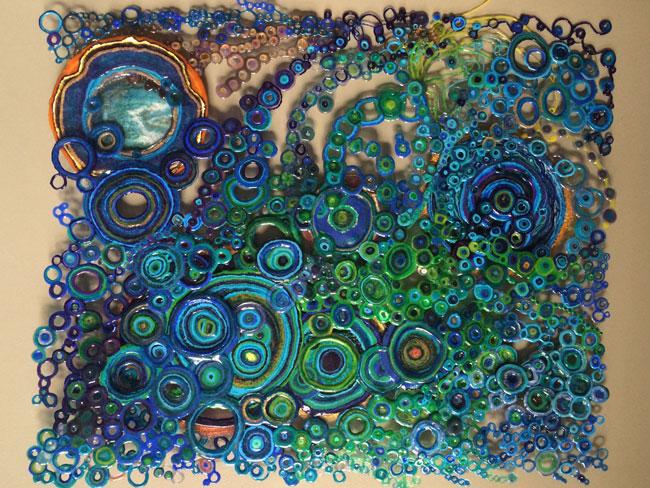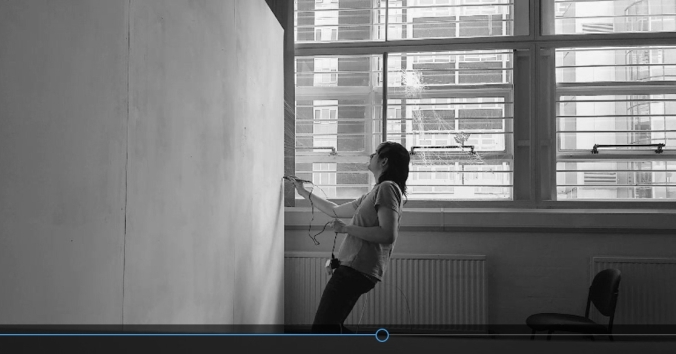A recent visit to Middlesbrough saw a return to an old stomping ground in MIMA, Middlesbrough Institute of Modern Art. This was my first visit to the gallery since 2013 and, more importantly, since the day-to-day running of the gallery was transferred from the local council to Teesside University.
Teesside World Exposition of Art and Technology
I was pleased to discover that on ‘surface level’ the gallery seems very much the same, the main gallery space was occupied with an exhibition entitled ‘Teesside World Exposition of Art and Technology‘ . This exhibition occupied all four rooms of the ground floor gallery space and is “an urgent reaction to the recent closure of Redcar’s steelworks and a bid to make a positive contribution to the future of industry in the North East region” (MIMA, 2016).
Each of the gallery spaces is interlinked, documenting the history of the regions industrial landscape and heritage from the mid-nineteenth century to present day and features the work of Aikaterini Gegisian, Adrián Melis, David Mulholland, David Watson, Eva Fàbregas, Farid Rasulov, Goldin+Senneby, Hackney Flashers, Mikhail Karikis, MVRD, Norman Appleton, Philip Boville and Len Tabner.
I found that the most effective way to view the exhibition was in reverse going through Gallery 1, 4, 3, 2 and finally back to 1.
‘Gallery 4’ centres around the industrial heritage of the North East, in particular steel making, and is highly charged with political pieces that are still sore from the recent steelworks closure. They are emotive and totally succeed in pulling on the heart strings of the viewer, one cannot help feeling as though they have also suffered loss through the demise of the industry.
‘Gallery 3’ takes this suffering and magnifies it onto a global scale, here issues of mass production, mass consumption, inequality, human rights, gender equality, pay gaps and corporate mentality are explored. The piece that stands out here is ‘Gem Machine‘ (2016) by ‘Unknown Fields‘, or rather the accompanying sculptural piece (pictured in the image cluster at the top of the page) to the video which is a visualisation of the financial gap between “poorly paid labour and the luxury market” (MIMA 2016). A handful of rice grain, representative of the daily quantity of rice consumed by labourers in the jewellery mining process, have been subjected to extreme heat and pressure and lay heaped around a single golden (and elevated) jewel. This piece is perhaps the most humbling of all in this exhibition, we are reminded just how much we have and how unfair the world actually is. Suddenly we are sheepishly shamed about our daily groans and our lives slide into perspective.
‘Gallery 2’ presents a collection of historical documentation, mostly on fairly positive subjects such as creation of ports, industries and times of expansion.
This brings us swiftly back to ‘Gallery 1’ which plays host to the regions current developments in science, technology and education. I feel it is much better to have experienced this exhibition in reverse, to be outward looking. To view the exhibition in the intended order would see us look out to the suffering on the global scale only to brush it aside in favour of suffering closer to home on an arguably (and perhaps controversial to say so) lesser scale.
The Office of Useful Art

“Developed in collaboration with artist Tania Bruguera, the Van Abbemuseum and the Internationale confederation of European museums as part of the Uses of Art programme funded by the European Culturefund and Arts Council England” (MIMA, 2015), ‘The Office of Useful Art‘ plays host to ‘The Arte Útil archive’. It is not an exhibition but rather a working space for the public to make art for social change.
It was interesting to note that this particular display of public interaction centred around the recent EU referendum. Surprisingly for a town that voted 65.5% to leave the EU the rhetoric in this political installation was undeniably on the side of remain and sought to shine light on the false truths promised by ‘Leave’ campaigners. This also links to the closure of the steelworks and the feeling of abandonment felt by the electorate in the region.
If All Relations Were to Reach Equilibrium, Then This Building Would Dissolve
“If All Relations Were to Reach Equilibrium, Then This Building Would Dissolve explores the tension between free circulation and border control as well as the experience of exile and displacement, and focuses on human rights, governmental policies, xenophobia, identity, and trauma, among other themes” (MIMA, 2016).
I did find this particular exhibition to be the most alarming, it highlights the high level of xenophobia, racism and euro scepticism in one of the areas the benefited most from being in the European Union. New buildings for School’s and Universities in Teesside have been funded through the EU alongside redevelopment of town centres that Downing Street has long forgotten (Blackburn, 2016).
Figures show that Teesside was due to receive £162m in EU funding between 2014 and 2020 (as the third highest beneficiary of the UK’s EU funding behind Cornwall and Wales) (Ellis, 2016) which might have proved vital to future generations of Teessider’s who have been unable to see past the end of their noses due to sensationalised tales of an impending migrant crisis, a high case of regional self entitlement and the trend of gutless politicians shifting blame onto others in what I shall call scapegoat-ism.
“The exhibition’s title is a piece by Gillick, a text he originally proposed as part of his commission for the Home Office’s new London headquarters in the early 2000s. According to the organisation’s website, the Home Office is the government department responsible for immigration, counter-terrorism, police, drugs policy and related science and research. Gillick’s expression suggests that in a world in which all people are truly equal, or at least treated equally, the Home Office would not need to exist” (MIMA, 2016).
Centre for Social Making: Middlesbrough Collection display

The Middlesbrough Collection display is a bringing together of art, design and craft with a holistic view and encouragement for social use as learning tools.
“The Middlesbrough Collection was inherited from the former Cleveland Crafts Centre, Cleveland Gallery and Middlesbrough Art Gallery. It holds approximately 2,250 works from around 1900 to the present time, with strengths in post–Second World War British and international drawing, twentieth-century British ceramics and contemporary international jewellery” (MIMA, 2016).
The Caravan Gallery: Jan Williams & Chris Teasdale

“extra{ordinary} is an exhibition featuring a collection of photographs taken across the country over the last fifteen years. These works capture the extraordinary ‘reality and surreality’ of the way people live in contemporary Britain” (MIMA, 2016).
In many ways, this particular exhibition reveals the grotty reality of life in present day Britain and dispenses with the ideals we are presented with in glossy magazines and fairy tales.
I felt that each of the exhibitions gelled well together and told a complete story as one journeyed through the entire gallery, this was much more noticeable with the gallery under its new custodians than it was under any of my last visits, I look forward to returning.
Larry
References
Art Rabbit (2016) Teesside world exposition of art and technology. Available at: https://www.artrabbit.com/events/teesside-world-exposition-of-art-and-technology (Accessed: 20 August 2016).
Blackburn, M. (2016) Would Teesside be better off if the UK stays in Europe or leaves? Available at: http://www.gazettelive.co.uk/news/teesside-news/would-teesside-better-out-europe-11505345 (Accessed: 20 August 2016).
Ellis, M. (2016) How much EU funding could Teesside lose after Brexit? Available at: http://www.gazettelive.co.uk/news/teesside-news/teesside-could-lose-tens-millions-11568964 (Accessed: 20 August 2016).
MIMA (2016) Teesside world exposition of art and technology – mima – welcome to mima – mima – welcome to mima. Available at: http://www.visitmima.com/whats-on/single/teesside-world-exposition-of-art-and-technology/ (Accessed: 20 August 2016).
MIMA (2016) If all relations were to reach equilibrium, then this building would dissolve – mima – welcome to mima – mima – welcome to mima. Available at: http://www.visitmima.com/whats-on/single/if-all-relationships-were-to-reach-equilibrium-then-this-building-would-dissolve/ (Accessed: 20 August 2016).
MIMA (2015) The office of useful art – mima – welcome to mima – mima – welcome to mima. Available at: http://www.visitmima.com/whats-on/single/project-space-1-the-office-of-useful-art/ (Accessed: 20 August 2016).
MIMA (2016) Centre for social making: Middlesbrough collection display – mima – welcome to mima – mima – welcome to mima. Available at: http://www.visitmima.com/whats-on/single/centre-for-social-making-middlesbrough-collection-display/ (Accessed: 20 August 2016).
MIMA (2016) The caravan gallery: Jan Williams & Chris Teasdale – mima – welcome to mima – mima – welcome to mima. Available at: http://www.visitmima.com/whats-on/single/the-caravan-gallery-jan-williams-chris-teasdale/ (Accessed: 20 August 2016).










































































